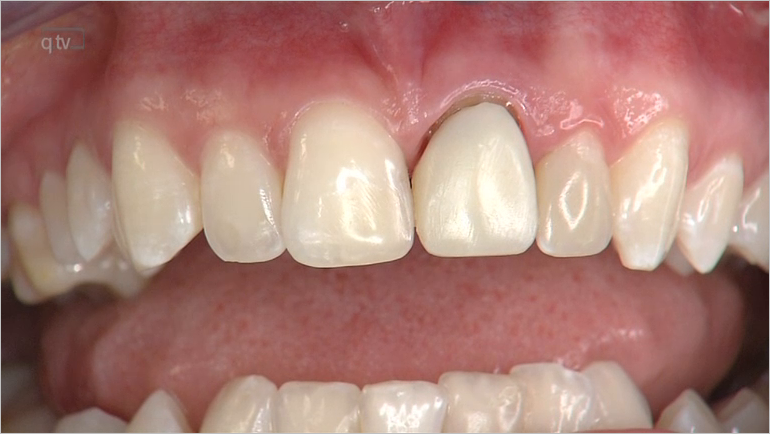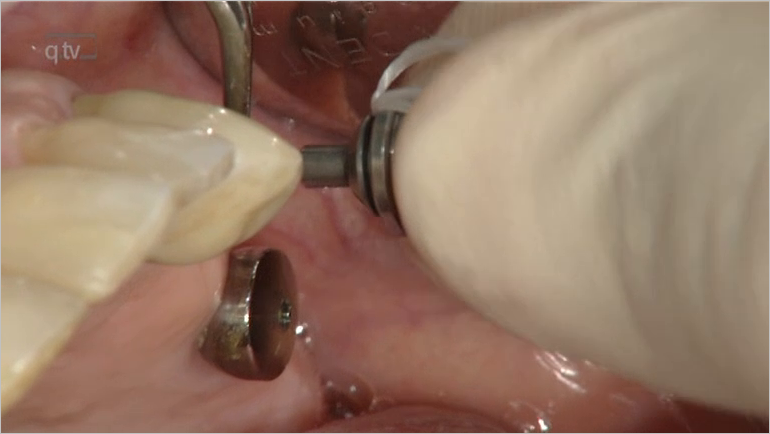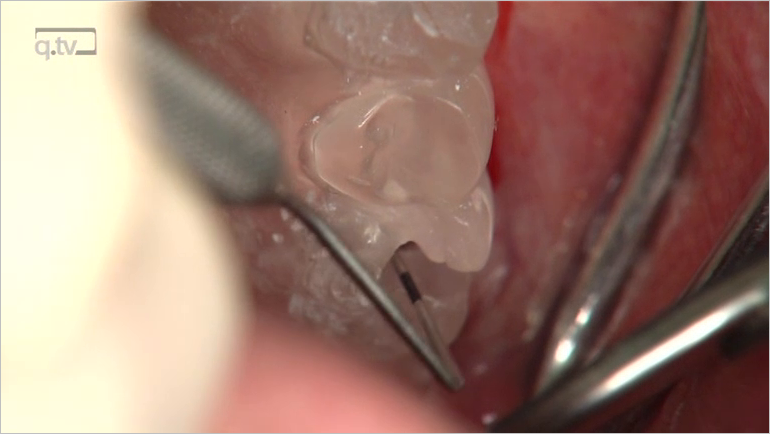Oral Health and Preventive Dentistry, 1/2020
Open Access Online OnlyOral HealthDOI: 10.3290/j.ohpd.a43363, PubMed ID (PMID): 31813943July 4, 2020,Pages 239-243, Language: EnglishKlotz, Anna-Luisa / Grill, Sabine Katharina / Hassel, Alexander Jochen / Rammelsberg, Peter / Zenthöfer, AndreasPurpose: To assess the extent of differences between the oral health of people aged 50 and 70 years in a community-based setting. Materials and Methods: This research is part of the Interdisciplinary Study on Adult Development (ILSE). All participants lived in the city of Heidelberg, Germany. For the dental study, 194 participants born 1930–1932 (n = 88) or 1950–1952 (n = 106) underwent a comprehensive dental examination. For each participant the number of teeth present, the number of decayed, missing, and filled tooth surfaces (DMF-S), the Plaque Index (PI), the Gingiva Index (GI) and the Community Index of Periodontal Treatment Needs (CPITN) were determined. Depending on the structure of the data, differences between the birth cohorts were calculated by use of t tests or chi-squared tests. Multivariate analysis was also performed to assess possible effects of gender and birth cohort. Results: Oral health conditions were significantly worse among septuagenarians than among quinquagenarians. Besides poorer oral hygiene, as measured by use of PI and GI (p <0.001), periodontal conditions were worse for septuagenarians (p <0.001), who also had fewer natural teeth (p <0.002); the number of carious lesions was similar in the cohorts (p >0.05). These results were confirmed by multivariate analysis and seem to be mostly gender independent. Conclusions: Oral hygiene and health is poor for quinquagenarians and septuagenarians, with more problems associated with greater age but not with gender. Longitudinal studies are necessary to evaluate the intraindividual development of changes of oral health during ageing.
Keywords: caries prevalence, periodontitis, oral health, oral hygiene, elderly people
QZ - Quintessenz Zahntechnik, 4/2017
Step by StepPages 514-521, Language: GermanHassel, AlexanderVerschraubte Abutmentkronen mit dentinähnlicher FlexibilitätVollkeramische Restaurationen neigen aufgrund ihres hohen Biegemoduls zu Chipping und Frakturen. Anhand eines Fallbeispiels wird der Umgang mit der Hybridkeramik VITA ENAMIC gezeigt, die über eine dentinähnliche Flexibilität verfügt und damit eine allzu starre Verankerung des Implantatkörpers im Knochen kompensiert. Darüber hinaus ist eine Konditionierung des Hybridmaterials mit Flusssäure und Silan möglich, sodass der Schraubenkanal nachhaltig maskiert werden kann.
Keywords: Hybridkeramik, Chipping, Flexibilität, Polymernetzwerk, Abutmentkrone
Team-Journal, 2/2016
Pages 75-78, Language: GermanHassel, AlexanderDie Bestimmung der richtigen Zahnfarbe stellt einen der komplexesten klinischen Schritte in der Zahnheilkunde dar, bislang häufig ohne sicheres Ergebnis, oft kein "predictable result". Dies hat vielfältige Ursachen. Ein wichtiger Punkt ist, dass Farbe eine subjektive Empfindung ist, die von Mensch zu Mensch unterschiedlich sein kann. Insbesondere sind der wahrgenommene Farbunterschied und seine Beurteilung unterschiedlich. Dies bedeutet für den zahnheilkundlichen Bereich, dass die Empfindung, ob die reproduzierte Farbe in gewissen Grenzen ein gutes Match zum Vergleichszahn ist oder nicht, von Betrachter zu Betrachter variiert. Hinzu kommt, dass ein Zahn oft nicht nur eine Farbe hat, sondern viele Farben aufweisen kann, von mehr oder weniger transparenten Arealen noch gar nicht gesprochen. Zudem ist die Prozesskette von der Farbnahme, über die Farbkommunikation bis hin zur Farbreproduktion sehr lang, mit vielen Zwischenschritten, die alle Einfluss auf das Endergebnis nehmen. Hier sollte man auch immer im Auge behalten, dass mit den üblichen Farbmustervorlagen nur eine begrenzte Anzahl an Farben zur Verfügung steht. Es kann durchaus sein, dass ein Patient eine Zahnfarbe hat, die schlicht nicht für eine gute Reproduktion zur Verfügung steht. Im klinischen Alltag wird die Zahnfarbe eher als ein schneller, oftmals abschließender Behandlungsschritt durchgeführt oder in einigen Fällen auch ganz vergessen, dies resultiert dann häufig in A3 oder A3,5. Bei größeren Arbeiten ist oft der Zahntechniker zugegen, um selbst die Farbe zu bestimmen. Dieser Artikel will ein einfaches und sicheres Konzept zur Farbnahme durch den Zahnarzt selbst aufzeigen.
Senioren-Zahnmedizin, 3/2015
Pages 119-124, Language: GermanZenthöfer, Andreas / Rammelsberg, Peter / Hassel, AlexanderDer häufig reduzierte Mundgesundheitszustand von Senioren ist in der nationalen und internationalen Fachliteratur mittlerweile sehr sorgfältig dokumentiert. Senioren repräsentieren allerdings eine inhomogene Gesellschaftsgruppe mit unterschiedlichsten mehr oder weniger ausgeprägten gesundheitlichen Problemen. Auch die Ursachen für die Verschlechterungen der Mundgesundheit im Alter sind sehr vielschichtig. Besonders bei stärkerer Pflegebedürftigkeit und Demenzerkrankungen scheint der zahnmedizinische Behandlungsbedarf hoch zu sein. Dabei können Erkrankungen der Mundhöhle einerseits negative Auswirkungen auf die Kaufunktion und damit die Ernährung haben, anderseits aber auch die allgemeine Gesundheit beeinträchtigen (u. a. Pneumonien, Herz-Kreislauf-Erkrankungen, Diabetes). Dieser Artikel skizziert die verfügbare Datenlage zur Mundgesundheit von pflegebedürftigen und demenzkranken Senioren, beleuchtet relevante Einflussfaktoren und stellt praxistaugliche Konzepte zur Verbesserung des Mundgesundheitszustands dieser Gesellschaftsgruppe vor.
The International Journal of Prosthodontics, 2/2015
DOI: 10.11607/ijp.4016, PubMed ID (PMID): 25822309Pages 198-200, Language: EnglishZenthöfer, Andreas / Rammelsberg, Peter / Cabrera, Tomas / Hassel, AlexanderTo investigate the association between prosthetic rehabilitation and malnutrition in institutionalized elders, 255 nursing home residents were recruited for this study and underwent a comprehensive dental examination. The body mass index (BMI) was administered to estimate the nutritional condition. Participants with BMI 20 kg/m² were categorized as malnourished (n = 33), whereas all others were categorized as adequately nourished (n = 222). The number of teeth present and the prevalence of prosthetic rehabilitation were significantly lower in malnourished participants (P .05). Malnutrition risk was 4.6 times higher for participants who were edentulous and did not wear dentures. Adequate replacement of teeth is important to prevent malnutrition in institutionalized older people.
The International Journal of Prosthodontics, 4/2014
DOI: 10.11607/ijp.3770, PubMed ID (PMID): 25010883Pages 376-382, Language: EnglishZenthöfer, Andreas / Wiesberg, Stefan / Hildenbrandt, Achim / Reinelt, Gerhard / Rammelsberg, Peter / Hassel, Alexander J.Purpose: Although the VITA 3D-Master (3D) shade guide offers improved shadematching performance, many dental materials are only available in VITA Classical (VC) shades. This study aimed to clarify whether it is possible to convert 3D shades determined by observers into VC shades (indirect method) without adding a clinically significant error in comparison with direct shade determination using the VC shade guide.
Materials and Methods: Forty ceramic specimens were fabricated. L*a*b* values were recorded using a spectroradiometer. Sixty participants (35 dentists, 15 technicians, and 10 students) were recruited and asked to determine the shades of specimens using the VC and 3D shade guides under standardized conditions. Conversion tables were constructed by allocating the closest VC shade tab to every matched 3D shade and by use of an optimization algorithm (indirect methods). Differences between ΔE values for VC matches and for the indirect methods were evaluated using t tests.
Results: A mean ΔE (SD) of 4.34 (2.00) for VC and 4.22 (2.21) for 3D was observed (P = .040). Compared with direct shade matching using VC, the indirect method with the optimized tables resulted in a mean ΔE of 4.32 (1.96), which was not significantly different (P = .586).
Conclusions: Within the limitations of this study, the conversion tables were suitable for the determination of tooth color using the 3D shade guide followed by conversion into VC shades without adding a clinically significant error.
Team-Journal, 5/2013
Pages 271-273, Language: GermanHassel, AlexanderJournal of Craniomandibular Function, 3/2010
Open AccessPages 205-215, Language: English, GermanSeneadza, Viktoria / Balke, Zibandeh / Schröder, Johannes / Schmitter, Marc / Nitschke, Ina / Leckel, Michael / Hassel, Alexander / Rammelsberg, PeterThe objective of this study was to evaluate the genderrelated prevalence of TMD in elderly subjects. Within the interdisciplinary longitudinal study "ILSE," a subsample of 102 male and 96 female subjects (born 1930-32) were examined. An assessment of temporomandibular disorders based exclusively on the Research Diagnostic Criteria for Temporomandibular Disorders (RDC/TMD), without imaging, was added to the dental record of every subject. Four calibrated examiners performed the examination. Disc displacement without reduction was observed in 8.8% of the men and 12.5% of the women. Osteoarthrosis was observed in 4.9% of the men and 8.3% of the women. Osteoarthritis, arthralgia, and disc displacement with reduction could not be detected in the clinical examination. Although slightly more women had disc displacement without reduction or osteoarthrosis, no statistically significant differences between the genders could be detected (P = 0.246 and P = 0.271, respectively). The prevalence of joint-related TMD in this age group was low compared with results from studies performed using the Helkimo index.
Keywords: TMD, osteoarthrosis, disc displacement, arthralgia, gender
Quintessence International, 5/2009
PubMed ID (PMID): 19582247Pages 421-426, Language: EnglishHassel, Alexander J. / Cevirgen, Engin / Balke, Zibandeh / Rammelsberg, PeterObjective: To evaluate intraexaminer reliability in measurement of basic tooth color by use of a clinically applicable spectrophotometer.
Method and Materials: Three examiners determined the L* (lightness), C* (chroma), and h* (hue) values and tooth color according to the Vita 3D-Master shade guide system (Vident), twice for 161 anterior teeth of 19 subjects by use of a spectrophotometer (Vita Easyshade 1, Vita Zahnfabrik). Between the 2 measurements on each tooth, the investigators had to completely remove the probe tip from the mouth. The reliability of the measurements was observed, and deviations between the 2 L*C*h* measurements, as well as ΔEab for the measurements, were calculated.
Results: Exact agreement of chosen shade tab according to the 3D-Master shade guide was achieved in 48% of cases. Mean ΔL*, ΔC*, and Δh* for all examiners were 1.9 (SD 1.7), 1.3 (SD 1.3), and 0.5 degrees (SD 0.7 degrees), respectively. The maximum deviation was 9 for ΔL*, 7 for ΔC*, and 3 degrees for Δh*. Mean ΔEab for the measurements was 2.7 (SD 1.8, range 0 to 9.5).
Conclusion: Intraexaminer reliability was usually acceptable, although a clinically relevant difference between the 2 measurements of an examiner was occasionally observed. This uncertainty should be borne in mind in clinical routine and in studies reporting changes in color, eg, studies of tooth bleaching.
Keywords: ΔEab value, reliability, shade guide, spectrophotometer, tooth color, tooth-color measurement
The International Journal of Prosthodontics, 1/2009
PubMed ID (PMID): 19260427Pages 49-52, Language: EnglishOhlmann, Brigitte / Marienburg, Katrin / Gabbert, Olaf / Hassel, Alexander / Gilde, Herbert / Rammelsberg, PeterThe purpose of this study was to evaluate the fracture-load values of cantilevered all-ceramic fixed partial dentures (FPDs). Fifty FPDs were manufactured using a zirconia frame to replace a missing molar. The FPDs were divided into five groups, each with a different framework design. After thermocycling and mechanical loading, the load to fracture was measured. The Mann-Whitney U test was used for statistical analysis. The mean fracture-load values for the test groups ranged from 346 to 548 N. Reinforcement of the shoulder on the oral side of the occlusal wall resulted in higher fracture load values, while increasing the wall thickness of the distal abutment did not improve fracture resistance. The results indicate that all-ceramic cantilever FPDs cannot yet be recommended for clinical replacement of a missing molar.







